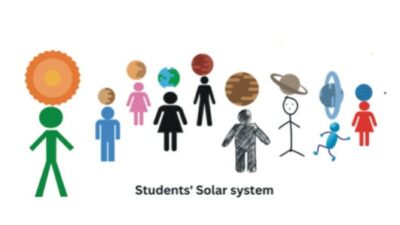Education is a lifelong process. We all learn till we are alive. But when it comes to children’s education, it is the parent’s foremost responsibility to give the child the best education. When I say best, I do not mean the topmost international level of education.
Allah swt says He created man and jinn only for one purpose – to Serve Him. This means, no matter what we do, our actions should align with the purpose for which we have been created. The same goes for education as well.
No education should be prepared to be learned in isolation. It is designed to work in collaboration with other streams of knowledge. For a Muslim student, the purpose of his/her education is to know the Creator and the Creator’s world.
In almost all the schools, the child is made aware of the Creator’s world, but no mention is made of the Creator of all the creations. Isn’t that a grave misdemeanour?
If the parents have chosen a non-Islamic school, then the onus lies totally on the parents to give the child a real education. Education doesn’t place learning in separate boxes but is integrated into a child’s learning journey.
The following is a sample teaching plan on Planets for 8 years old which parents/teachers can use to teach the child. No part of the national curriculum learning objective has been left out. The textbook content is usually taught keeping the creation as the focal point, but this teaching plan will also talk about the Creator and will enhance the child’s critical thinking skills.
I am sharing the first session’s lesson plan (out of seven sessions). In the coming months, in sha Allah, I will post lesson plans of other topics and age groups.

GRADE 3 – SCIENCE – PLANETS AND THEIR NEIGHBOURS
The learning objectives
To be able to
• List the planets of the solar system.
• Describe the shape of the earth
You may introduce the lesson in the following manner;
Greet the children warmly.
Make them recite the dua – ‘Rabbi Zidni Ilma’
Remind them of the class rules.
Tell the class that we will be starting a new topic from today – Earth and its companions
Ask the class to share their knowledge about Earth. And what is the meaning of Earth’s companions? Ask the class, what/who could be earth’s companions.
Write their answers on the board.
Allah swt created this beautiful planet that we call Earth. Allah swt covered the surface of the Earth with land and water and surrounded it with a layer of air called the atmosphere. Air and water support life on the earth. We walk on land and grow our food on land.
Some people have gone to space and taken photographs of the earth from there.
People who go into space are called astronauts. The earth is round and bulging in the middle, just like an orange. It is slightly flat at the two poles.
The Earth is round but why does it look flat? The Earth is very big. We can see only a small part of it. This small part appears flat to us.
Ask the class what the solar system is.
After taking the answers, explain that Allah swt also created many other planets apart from Earth and ordered all the planets to move around the Sun. These are Mercury, Venus, Earth, Mars, Jupiter, Saturn, Uranus, and Neptune.
The family of the sun and the eight planets is called the solar system.
Allah swt has placed the Sun as a big lamp in the centre of the solar system. It is like a big ball of hot gases and fire. The Earth gets heat and light from the Sun.
Planets do not have their own light. They reflect the sunlight.
Allot some time for children to carry out an activity. Enhancing learning through activities is a good approach to deepening their learning. It also improves their high-order thinking skills. Always make sure to divide the class into your time and their time. Never design a session with you as the teacher doing most of the talking and making the students passive learners. Assign a good amount of time for students to have a hands-on learning experience.
Activity 1 – Explore the chapter. Ask children to open their textbooks and go to the current chapter. Ask them to go through the chapter to know what we will be learning in the coming sessions under this chapter. Ask children to give out the headings. Write the headings on the board. Encourage children to find on their own something about each topic.
Activity 2 – Make a solar system. Choose 9 students. One student can be given the position of the sun and the rest of the students can be asked to take the position of the planets.
Children can take the help of the textbook to know the positions. The other students can also help.
As part of the session concluded, ask the children, what is the title of our chapter. What are we going to learn in the coming sessions? Who created the earth? Why did Allah swt create the sun?
What is the shape of the earth, and how do we know?
The above teaching plan is not comprehensive. Depending on the ability of the students, the plan can be tweaked. But whenever you plan a lesson, keep in mind that every child learns differently and will respond differently. One size doesn’t fit all. As a teacher or parent, you need to have more strategies in your box. Plan for the child not for completing the syllabus.


COMMENTS